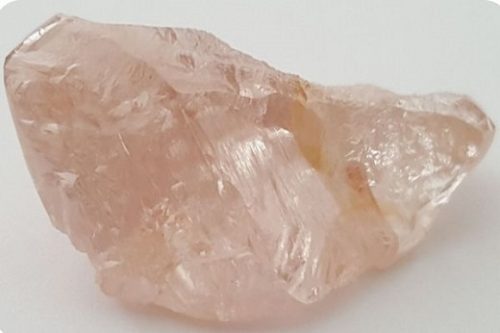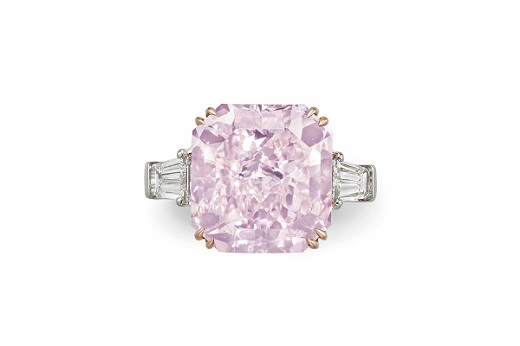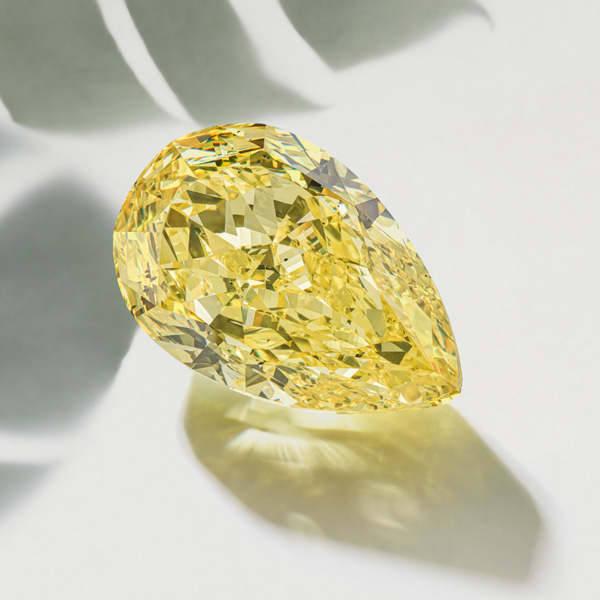If you've ever gone through the process of shopping for an engagement ring, you'll know there can be an overwhelming number of things to consider.
Aside from the look and style of your ring, you quickly start to learn an awful lot about diamonds, from the cut, to the colour and clarity.
What you may not know is most diamonds in Australia over the last 10 years have been laser inscribed with a serial number likened to a 'fingerprint' -- which makes it easier to trace should the unfortunate event that your engagement ring is lost or stolen ever take place.
This code in turn makes your ring a 'low risk' theft item because it's easy for police to trace it. But don't go pulling your ring off your finger to check for that little serial number just yet.
The code is inscribed directly onto the girdle of the diamond which is quite difficult to get to when it's in a setting and it can't be seen with the naked eye either, having to be checked under a microscope instead.

Speaking to 10 daily, Roy Cohen, a diamond expert from Certified Diamond Insurance, said this spot was specifically chosen instead of on the engagement ring band as this could be lost if it was melted down. Yet removing the code from the diamond itself is near impossible.
"It cannot be removed unless the diamond goes back to a diamond polishing factory where it is put back on the wheel and polished off. I mean, there are very few diamond polishing factories in Australia so the chances of that happening are very remote," Cohen said.
"It’s even harder than for example, the engine number of a motor car. They could just machine it off. I mean, anyone could do that. But with a diamond? No. Only diamond cuts diamond."

This process of inscription is completed by Certified Diamond Insurance (CDI) who are in partnership with a Australia’s leading diamond certifier, Diamond Certification Laboratory of Australia (DCLA), as well as the Woodina Underwiting Agency.
Together they're working towards driving the costs associated with insuring diamonds down for Australians, with new research finding almost half of Australia diamond engagement rings aren't insured. If they are, 70 percent of these have inadequate insurance as they're usually lumped with other items as part of home contents insurance.
"If you go and get household insurance, you’ll be paying a standard kind of rate and because they cover everything, you’ll be paying slightly higher premiums," Cohen said.
"What we’ve done is we’ve pulled out all certified diamonds that are laser inscribed and we only ensure those diamonds. These are the lowest risk diamonds."

According to Cohen, these diamonds are a 'thief's worst nightmare' because they often aren't able to tell if it has been laser inscribed or not.
"Thieves can get caught so much easier with this type of diamond. If they go and sell that to a hock shop and it has the laser inscription on it, it is very easy to identify that that diamond has been stolen," he told 10 daily.
So how can you check if your diamond has the laser inscription on it or not? According to Cohen, it's as easy as checking your diamond certification certificate.
"Most diamonds that are of value are sold with diamond grading certificates in Australia and most of those are laser inscribed," he said.The certificate will make note that the diamond has been laser inscribed and it will have the number that’s on the actual diamond.
Yet while most diamonds now have the laser inscribed code on them, if your engagement ring happens to be an heirloom or has been passed down through the family, it likely doesn't. The upside is CDI are offering complementary diamond grading and laser inscription for diamonds owners in this situation.
"So if anybody wants take advantage of the lower premiums that CDI is offering and the diamond is not certified and not laser inscribed, we will actually do that for them," he said.
"The diamond gets removed from the setting, the diamond is graded, laser inscribed and then set back in the setting. Then it is eligible for CDI insurance."

CDI are further working on establishing a nation wide data base where individuals can register their ring along with it's details and pictures. Should the ring ever be lost or stolen, it can then be flagged in this system, making it easier to locate.
"Then wherever it ends up or if it’s ever checked against that data base or it ends up at a diamond grading laboratory, it will be identified," Cohen said.
"So the benefit is, let's say it was a heritage diamond from your grandma or something like that, you actually have a chance of getting the diamond back."










